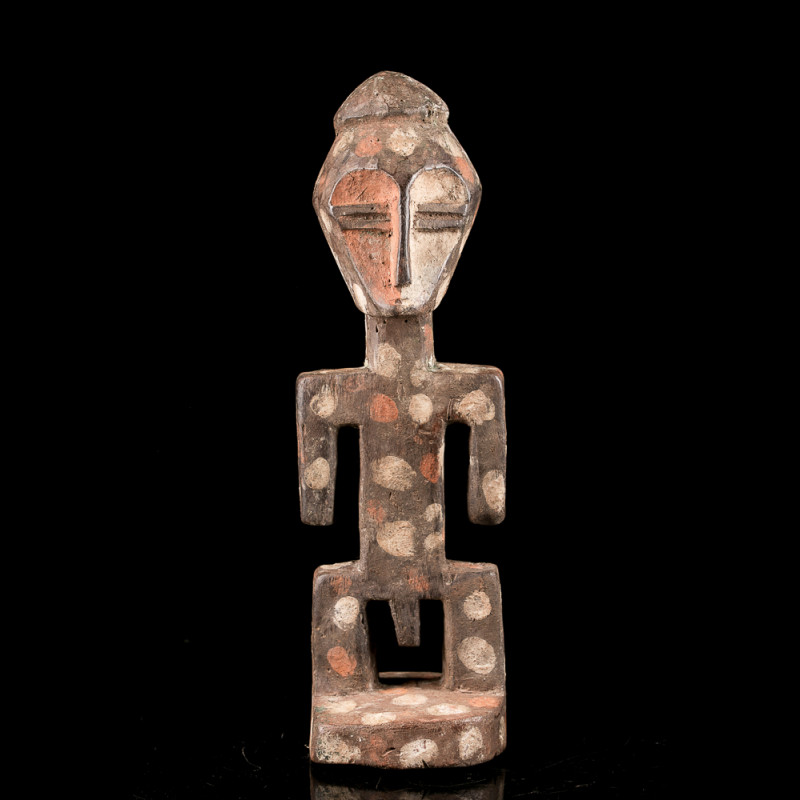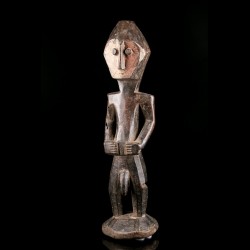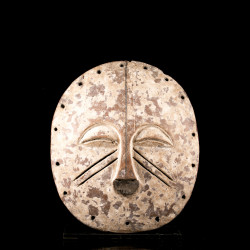














The Metoko and Lengola are known in African art for their highly stylized statues. The figurine that I propose to you here are no exception to this rule since the body is very simplified, the limbs are square, the shapes generally geometric. We find a small face with half-closed eyes. It will also be noted that the pigmentation has been well preserved and is typical of these ethnic groups.
The Metoko statues fit into the important bukota brotherhood which played a leading political role in their society.
The bukota is a hierarchical society that practiced circumcision rites. It is in this context that the artistic corpus was used, during the circumcision itself.
Statues like this one called mosilo were placed near the mokoli officer's house to indicate that the rite was in progress (the circumciser was the nkoli).
This African statuette was collected along the Lualaba River in the 1970s in the province of Tshopo, in the Democratic Republic of Congo.
This is where we find the Metoko (in the South) and the Lengola (in the North), settled in this region following the attacks of the Kumu from the North.
There are also statues among the Metoko intended to be placed on tombs. Some of them are known to us as kakungu. The latter served as a temporary receptacle for the soul of the deceased.
Data sheet
You might also like

The Metoko and Lengola are known in African art for their highly stylized statues. The figurine that I propose to you here are no exception to this rule since the body is very simplified, the limbs are square, the shapes generally geometric. We find a small face with half-closed eyes. It will also be noted that the pigmentation has been well preserved and is typical of these ethnic groups.
The Metoko statues fit into the important bukota brotherhood which played a leading political role in their society.
The bukota is a hierarchical society that practiced circumcision rites. It is in this context that the artistic corpus was used, during the circumcision itself.
Statues like this one called mosilo were placed near the mokoli officer's house to indicate that the rite was in progress (the circumciser was the nkoli).
This African statuette was collected along the Lualaba River in the 1970s in the province of Tshopo, in the Democratic Republic of Congo.
This is where we find the Metoko (in the South) and the Lengola (in the North), settled in this region following the attacks of the Kumu from the North.
There are also statues among the Metoko intended to be placed on tombs. Some of them are known to us as kakungu. The latter served as a temporary receptacle for the soul of the deceased.


